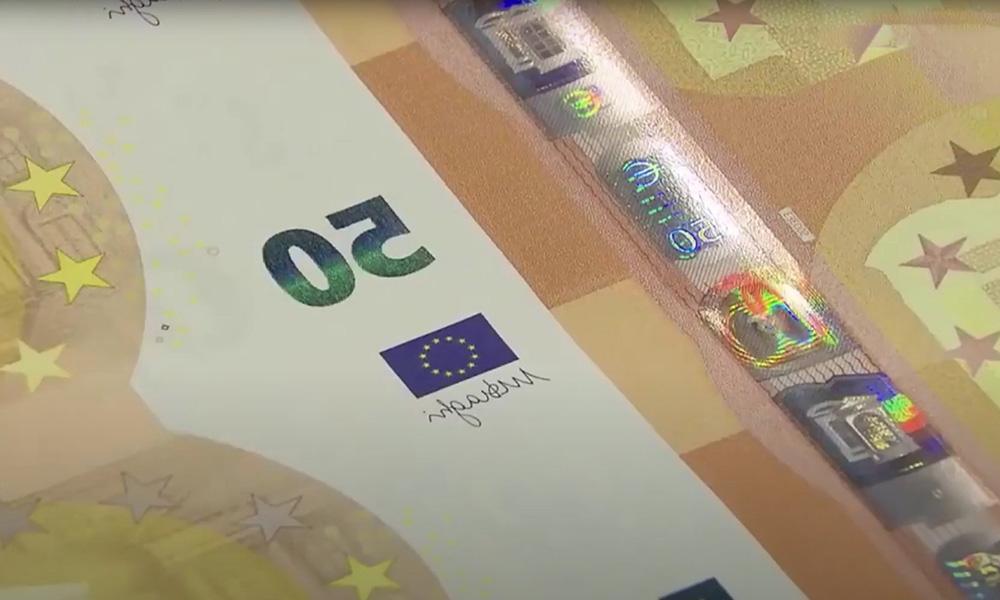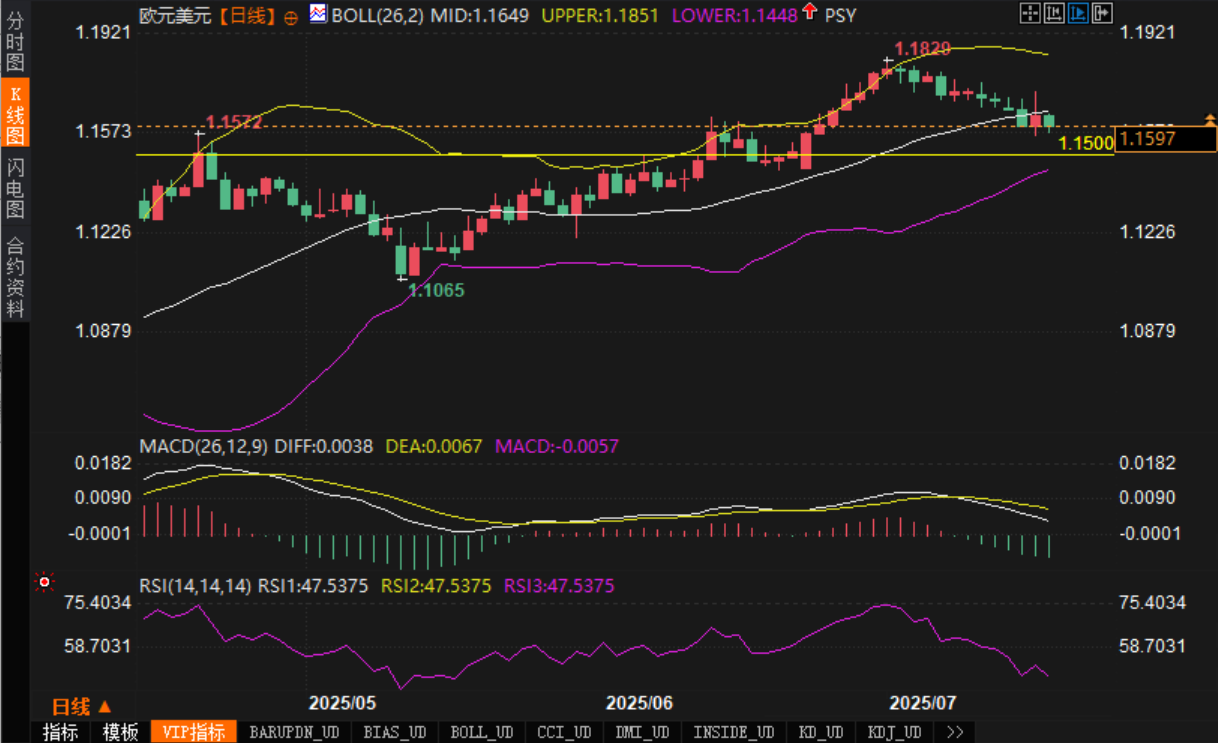The middle Bollinger band has been breached. How much room does EUR/USD have to fall?
2025-07-17 17:49:26

Fundamentals
The recent sharp fluctuations in the European and American currency markets are due to the intensified public conflict between Federal Reserve Chairman Powell and President Trump. Although Trump denied his intention to remove Powell, he has repeatedly expressed dissatisfaction with the Fed's policies and management costs, and hinted that he might use fraud allegations to promote personnel adjustments, causing market concerns about the independence of the Fed. Analysts believe that this potential risk of political intervention is interpreted by the market as a medium- and long-term uncertainty factor that suppresses the US dollar, although the US dollar is still supported by risk aversion in the short term.
In terms of data, the annual rate of PPI in June fell from 2.6% to 2.3%, and the core PPI was also weak, alleviating the market's concerns about the re-acceleration of inflation. At the same time, the market is expecting a 0.1% month-on-month increase in retail sales in June. If the data is weak, it will further test the market's confidence in the path of "higher and longer interest rates". The number of initial jobless claims is expected to rise to 235,000. If it continues to rise, it may cause the market to re-evaluate the resilience of the US labor market.
In Europe, the final value of CPI in June was confirmed to be 2.0% year-on-year, and the core CPI remained stable at 2.3%, which was consistent with the ECB's inflation target and failed to become a catalyst for the euro. Italy's inflation rose slightly to 1.8%, but it was still lower than the overall level of the euro zone, and had limited impact on the market. The euro zone's trade surplus in May was far higher than expected, increasing from 990 million euros to 16.2 billion euros, showing that external demand in the region is still resilient. However, the EU budget plan was opposed by Germany, and the unstable political situation in France further suppressed the buying of the euro. According to Reuters, the budget proposed by French Prime Minister Bayrou has caused controversy due to the freeze of public spending and the cancellation of holiday arrangements. Both the left and the far right have expressed dissatisfaction. If the bill cannot be passed in the autumn parliament, Bayrou may face a motion of no confidence, and political risks deserve close attention.
Technical aspects:
The daily chart shows that the EUR/USD has recently started continuous adjustments from the high of 1.1829, forming a clear downward trend channel in the short term. The current K-line entity has closed below the middle track of the Bollinger Bands, and the Bollinger Bands have flattened and tilted slightly downward, indicating that the trend momentum is gradually leaning to the downside. The volatile decline since mid-July has caused the exchange rate to approach the previous strong support area of 1.1500-1.1565. Analysts believe that if the 1.1500 integer mark is lost, it will open up further retracement space, with the target pointing to the lower Bollinger Band of 1.1448.

MACD indicator shows a dead cross structure, the fast line (DIFF) crosses the slow line (DEA), and the bar chart continues to be green and expands, indicating that the short-term momentum is increasing; the RSI indicator is near 47.5, and has been maintained in the neutral and bearish range for many consecutive days. There is no obvious divergence signal, but the direction is downward, reflecting the weak market buying intention. Analysts believe that the previous high of 1.1829 constitutes an important resistance for a short-term rebound, and further resistance is located at the upper Bollinger track of 1.1851.
Based on the above analysis, we believe that the short-term technical trend is bearish. If the exchange rate cannot stabilize in the current support area of 1.1500-1.1565, there is a risk of testing the lower Bollinger band or even falling below the bottom of the box. Bulls need to wait for the MACD histogram to narrow and show signals such as bottom divergence before they can preliminarily confirm that the decline has stopped.
Market sentiment observation
The overall market sentiment is bearish, driven mainly by risk aversion. Although the uncertainty of the US political situation has increased, the market is more concerned about the stability of the Fed's policy and the strength of economic fundamentals. Data show that US inflation has slowed down, but it has not yet constituted evidence of a radical change in the policy path. The market is in a state of negotiation between "pausing interest rate hikes" and "maintaining high interest rates."
On the other hand, the dual political and fiscal uncertainties facing the euro have caused the market to continue to avoid long euro positions. The political volatility in France and the internal differences in the EU budget plan have challenged the consensus within the eurozone, inhibiting the appreciation of the euro in the medium and long term. Overall, the market's risk appetite is low and it tends to hold highly liquid assets such as the US dollar;
Sentiment indicators such as RSI and MACD both show that momentum is weakening, and the market lacks obvious signals of reversal. In the short term, the exchange rate will still be dominated by volatile downward movements. Unless there is unexpected positive news or the US economic data is seriously below expectations, the current structural bearish sentiment will be difficult to reverse quickly.
Outlook
Short-term outlook:
As the exchange rate approaches the key psychological level of 1.1500, we need to be alert to short-term technical rebounds. Analysts believe that if the US retail sales or unemployment data released on the same day are significantly weaker, it may trigger a short-term rebound in the exchange rate and test the pressure of 1.1649. However, in the absence of volume support and technical structure repair, such rebounds may be more of a "dead cat bounce" nature, and traders should remain cautious.
Long view:
Analysts believe that if the 1.1500 support is effective, coupled with the support of fundamentals, EUR/USD may usher in a phased technical rebound, and the first focus will be on the resistance of the 1.1649 Bollinger middle rail and the 1.1700 integer. Once the Bollinger middle rail is effectively recovered and closed above it, it can be regarded as a preliminary confirmation of a short-term reversal, and then the focus will be re-on the possibility of a breakthrough of the previous high of 1.1829.
Short perspective:
Analysts believe that if the exchange rate breaks through 1.1500 and continues to weaken, it will confirm the establishment of the stage top, and the exchange rate may enter a deeper correction stage, with the technical target pointing to the lower Bollinger band of 1.1448, and even the possibility of testing the previous low of 1.1065 is not ruled out. This path depends on the continued recovery of US dollar liquidity and the fundamental cooperation of the widening gap between US and European data.
- Risk Warning and Disclaimer
- The market involves risk, and trading may not be suitable for all investors. This article is for reference only and does not constitute personal investment advice, nor does it take into account certain users’ specific investment objectives, financial situation, or other needs. Any investment decisions made based on this information are at your own risk.










